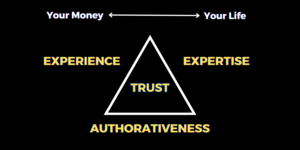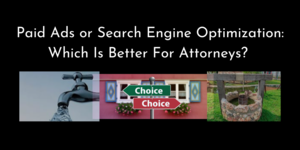Why Social Media for Outreach?
Social media platforms provide powerful opportunities for lead and demand generation. Their presence “in our palms” engaging our attention on a daily basis make them attractive targets for organic (and paid) marketing efforts.
They provide a vehicle for attracting attention and building relationships that would not exist otherwise.
While often frustrating and difficult, businesses and brands are engaging on the platforms more than ever. With the exponential growth of digital marketing in general, this trend is poised to continue into the future.
Platforms
Platforms are abundant and continually growing.
While they have similarities (social interaction and potential for viral message spread), each is a unique ecosystem unto itself with different audience characteristics and content preferences.
While some platforms are more suited to some businesses and brands, the list below highlights some of the most common and how they can best serve to connect with prospects nurturing relationships with them.

There are estimated over 2.5 billion users on Facebook worldwide. With the average user’s daily time on the platform measured in hours (not minutes), it is easy to see why Facebook tops the list of platforms to have a presence.
Even with organic reach averaging around 6% for Feed posts, that still represents a wide prospective audience for those who can develop content that attracts attention and engagement.
Note: Organic reach specifically relates to the probability that any post is served to a user.
Adding the opportunity to post via Stories and in Groups, there is still an available landscape where effective marketers can share their message.
Hint:
Facebook’s algorithm calculates the likelihood that a post might interest a user based on their identity, preferences, and historical behavior. The more users engage with you or your content, the most likely Facebook will show it.
Understanding (and utilizing this), it is possible to get greater than average organic reach if your content indexes well for attention and engagement. It is equally possible for content to get lower than average organic reach if it does not!
Owned by Facebook, Instagram represents another over one billion user accounts worldwide.
Users often tend to be younger on average and are often even more active on the platform from a daily usage perspective. If you target this more active demographic, it is another platform deserving attention.
Again, organic reach tends toward the 6% range, but video-based content performs especially well.
Hint:
Don’t overlook Instagram Stories and their additional features around linking to your user account for longer than 24-hour lifespans.
Linked-In
Originally starting as “online resumes”, Linked-In has matured to a content-based platform for professionals. Due to its unique features and still-wide potential for organic reach, it is definitely a platform worthy of investment, especially for B2B lead generation.
Hint:
Linked-In Groups offer a goldmine of opportunity for local businesses and brands. Since groups exist based on locales, industries, and even hobbies/interests, there is a near-endless supply of association groups with whom you can interact and engage.
YouTube
YouTube is possibly one of the most powerful “social media” platforms because it supports attention/engagement via both social and search. While its subscriber capability meets normal social definitions, its features related to search allows completely unaware users to find you.
Owned by Google, YouTube is currently the #2 search engine in the world so video content producers need to consistently publish onto the platform.
Hint:
Remind subscribers (in videos and other direct communications) to configure notifications when you publish new videos. As other users find your videos via search, this leverages the dual search/social capabilities of the platform.
Others

There are plenty of other platforms besides these four.
- Snapchat
- TikTok
- etc.
If you are active and have existing engagement on another platform, use it. Just remember that learning the unique characteristics of each (and keeping abreast of updates to them) can be a daunting task.
Hint:
Don’t jump onto platforms where your only purpose is “business”. If you are not interested in the platform as a user, you are not likely to become skilled enough to be effective on it.
Decomposition and Cross-Pollination

At the point where your content is attracting attention and building engagement on each of the platforms, the next step is to decompose it and cross-pollinate it across each.
Decomposition is where you take a piece of content (possibly a video) and break it down into component pieces (by both format and scale).
For example:
- A long-form video can be broken down into smaller, more-targeted snippets.
- A video can be stripped of audio and text to be published in podcast and/or blog format.
- Specific highlights or quotes can be published in infographics.
Once broken down into component pieces, each resulting content artifact can be published to your platforms with links to different formats on others. By using this cross-pollination technique, your attention and audience grows across each.
This diversification minimizes your risk and exposure if usage of a specific platform wanes (or your account is, for some reason, locked out).
Extra Credit: Why Video Is Important?

As humans, we remember…
- About 10% of what we read
- Around 20% of what we hear
- Over 30% of what we see
Because we engage with video content is as many as three ways, it can be as much as 60% (or more) effective in building our recognition, awareness, and trust.
Conclusion
Social media platforms should be a key element of your digital marketing strategy. While they are just one part, their features supporting engagement and relationship building should not be overlooked.
Blended with search-focused practices and paid advertising, they serve as a foundation for lead and demand generation.


